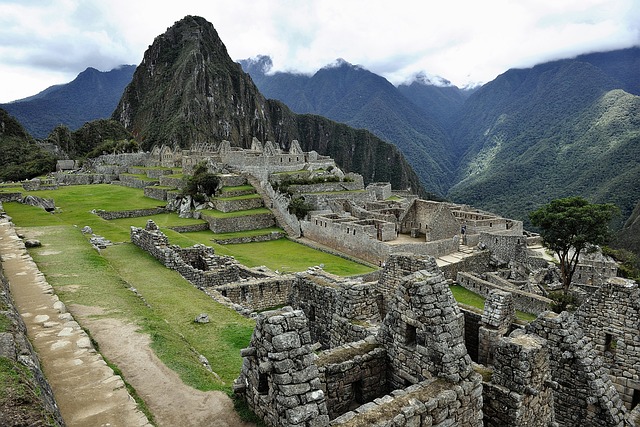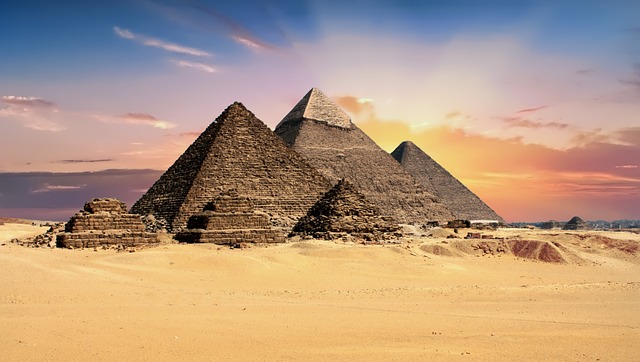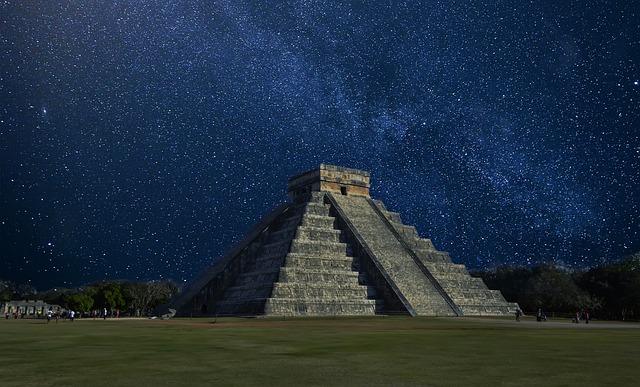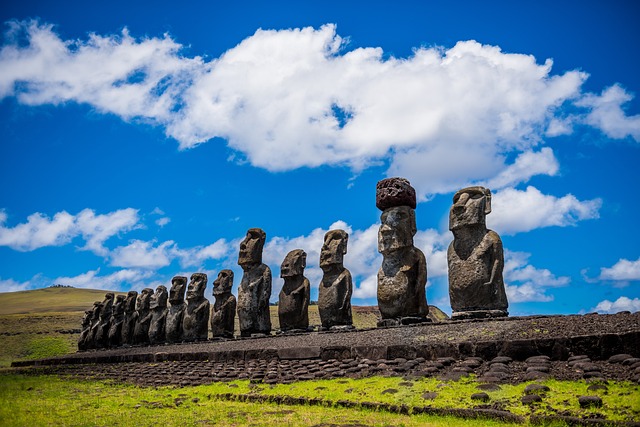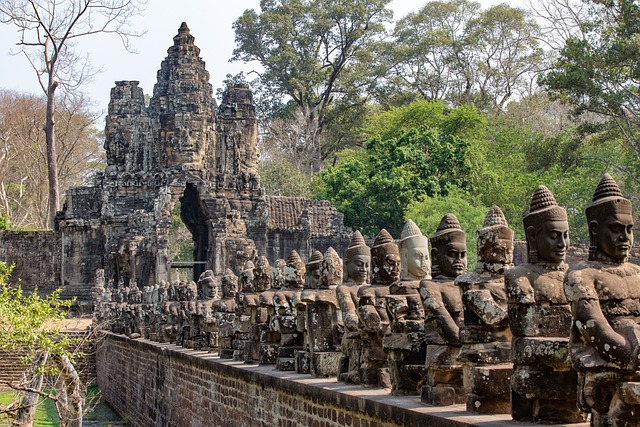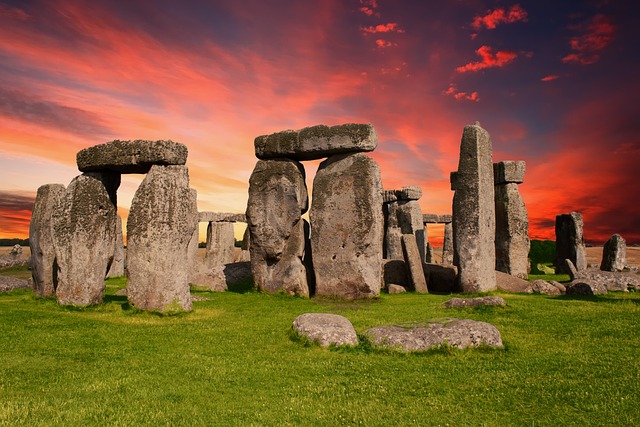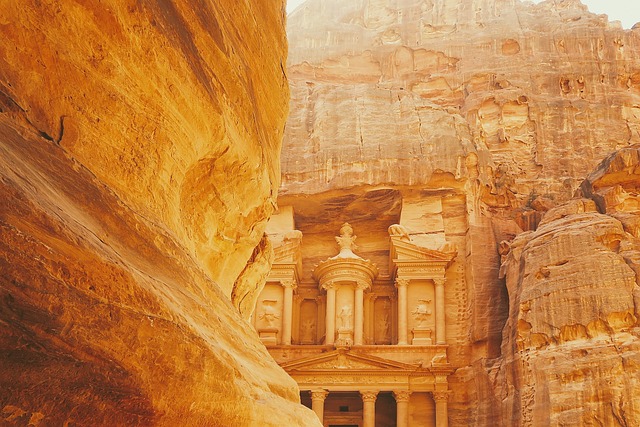Machu Picchu, Peru: A Friendly Guide to the Lost City of the Incas
Machu Picchu, Peru is a stunning UNESCO World Heritage Site located in the Eastern Cordillera of southern Peru. It is a 15th-century Inca citadel that sits on a 2,430-meter (7,970 ft) mountain ridge. Machu Picchu is often referred to as the “Lost City of the Incas” and is the most familiar icon of the Inca Empire.

History and Discovery: Machu Picchu was built in the 15th century and abandoned in the 16th century. It was rediscovered by Hiram Bingham in 1911 and has since become one of the world’s most famous manmade wonders. The site was declared a UNESCO World Heritage Site in 1983.
Geography and Structure: Machu Picchu is perched above the Urubamba River valley in a narrow saddle between two sharp peaks, Machu Picchu (“Old Peak”) and Huayna Picchu (“New Peak”), at an elevation of 7,710 feet (2,350 meters). The site is a masterpiece of Inca urbanism, architecture, and engineering, built without mortar or iron. It is a unique testimony of the Inca civilization and a rich biodiversity hotspot in the tropical Andes and Amazon Basin.
Key Takeaways
- Machu Picchu is a 15th-century Inca citadel located in the Eastern Cordillera of southern Peru.
- The site was rediscovered by Hiram Bingham in 1911 and has since become one of the world’s most famous manmade wonders.
- Machu Picchu is a masterpiece of Inca urbanism, architecture, and engineering, built without mortar or iron.
History and Discovery

Early Inca History
Machu Picchu, the “Lost City of the Incas,” is a 15th-century Inca citadel located in the Andes Mountains of Peru. The Incas were an indigenous people who dominated western South America in the 15th and 16th centuries. They built Machu Picchu at the height of their empire, and it served as a royal estate for the Inca emperor Pachacuti. The citadel was abandoned an estimated 100 years after its construction, and it remained hidden from the outside world for centuries.
Rediscovery by Hiram Bingham
In 1911, Hiram Bingham, a historian and explorer from Yale University, rediscovered Machu Picchu. He was led to the site by a local farmer who showed him the way. Bingham was fascinated by the ruins and spent several years excavating and studying them. He wrote several books about his findings, which helped to popularize Machu Picchu and increase interest in Inca civilization.
Historic Sanctuary of Machu Picchu
Today, Machu Picchu is a UNESCO World Heritage site and a popular tourist destination. The site is managed by the Peruvian government and receives thousands of visitors each year. In recent years, there has been controversy over the management and preservation of the site. Gene Savoy, an American explorer and archaeologist, claimed to have discovered a lost Inca city near Machu Picchu in the 1960s, but his findings have been disputed by other experts.
Overall, Machu Picchu remains an important symbol of Inca civilization and a testament to the ingenuity and creativity of the ancient peoples of South America.
Geography and Structure

Andean Mountain Range
Machu Picchu is situated in the Andean Mountain Range in Peru, at an altitude of 2,430 meters (7,970 ft) above sea level. The mountain range is known for its rugged terrain, steep cliffs, and deep valleys. The Urubamba River flows through the valley below the Citadel, adding to the scenic beauty of the place.
Architectural Features
The Citadel of Machu Picchu is a masterpiece of Inca architecture. The walls of the buildings are made of polished dry-stone, and they fit together so perfectly that it is impossible to insert a knife blade between them. The buildings have trapezoidal windows and doors, and the lintels are made of a single stone. The Incas used no mortar in their construction, relying instead on the precise cutting and fitting of the stones.
Agricultural Terraces
The Incas built agricultural terraces on the steep slopes surrounding Machu Picchu. These terraces were used to grow crops such as corn, potatoes, and quinoa. The terraces were constructed in such a way that they prevented soil erosion and retained water, making it possible to grow crops in the otherwise inhospitable terrain. The terraces are still visible today and add to the beauty and uniqueness of Machu Picchu.
Overall, the combination of the Andean Mountain Range, the architectural features of the Citadel, and the agricultural terraces make Machu Picchu a truly remarkable place to visit. Additionally, the view of the surrounding mountains, including Huayna Picchu, adds to the grandeur of the site.
Cultural Significance

Machu Picchu, Peru is a cultural and historical site that has been recognized as a UNESCO World Heritage Site. The site is known for its religious and astronomical significance, as well as its connection to the Inca language and traditions.
Religious and Astronomical Sites
Machu Picchu was believed to be a royal estate or sacred religious site for Inca leaders. The Temple of the Sun, located within Machu Picchu, was a significant religious site for the Incas. The temple was built to honor Inti, the sun god, and was designed to align with the sun during the winter solstice. The Intihuatana stone, also located within Machu Picchu, was believed to be an astronomical observatory used to track the movements of the sun.
Inca Language and Traditions
The Inca language, Quechua, is still spoken by many people in Peru today. The language was an important part of Inca culture and was used to communicate religious and cultural beliefs. Many of the structures at Machu Picchu contain inscriptions written in Quechua, which provide insight into the beliefs and traditions of the Inca people.
Overall, Machu Picchu is a significant cultural and historical site that provides insight into the religious and cultural beliefs of the Inca people. Its connection to the Quechua language and Inca traditions make it an important part of Peruvian history.
Tourism and Preservation

Visiting Machu Picchu
Machu Picchu is one of the most visited tourist destinations in South America. The site attracts around 1.5 million visitors annually, which has led to concerns about the impact of tourism on the site’s preservation. The Peruvian government has implemented measures to regulate the number of visitors to Machu Picchu and the Inca Trail, which is the most popular route to reach Machu Picchu. Visitors are required to book their visit in advance and are only allowed to stay for a limited time.
To reach Machu Picchu, visitors must first travel to the town of Aguas Calientes, which is the gateway to the site. Aguas Calientes has a range of accommodation options, from budget hostels to luxury hotels. Visitors can also find restaurants, bars, and souvenir shops in the town. From Aguas Calientes, visitors can take a bus or hike to Machu Picchu.
Conservation Efforts
Conservation of Machu Picchu is a top priority for the Peruvian government. The site is a UNESCO World Heritage Site and is protected by national and international laws. The government has implemented a range of measures to protect the site, including limiting the number of visitors, controlling access to certain areas, and enforcing strict regulations on tour operators.
In addition to these measures, the government has also implemented conservation programs to protect the site’s natural and cultural heritage. These programs include monitoring the site for damage, restoring damaged areas, and educating visitors about the importance of conservation.
Visitors to Machu Picchu can also contribute to conservation efforts by following the site’s rules and regulations, such as not littering or damaging the site, staying on designated paths, and not removing any artifacts or objects from the site.
In conclusion, tourism and conservation go hand in hand at Machu Picchu. While the site is a popular tourist destination, it is also a valuable cultural and natural heritage site that requires protection. Visitors can enjoy the site while also contributing to its preservation by following the rules and regulations and respecting the site’s cultural and natural heritage.
Challenges and Controversies

Machu Picchu, one of the most iconic archaeological sites in the world, has faced several challenges and controversies over the years. In this section, we will discuss some of the most significant issues that have affected this ancient Incan citadel.
Environmental Concerns
Machu Picchu is located in a fragile ecosystem, and the increasing number of tourists has put a significant strain on the environment. The site’s popularity has led to issues such as erosion, deforestation, and pollution. The Peruvian government has taken several measures to address these problems, such as limiting the number of visitors and implementing sustainable tourism practices. In 2023, Peru shut parts of Machu Picchu from tourists due to erosion [1].
Cultural Disputes
Machu Picchu is not only an archaeological site but also a sacred place for the indigenous people of Peru. The site has been at the center of several cultural disputes over the years, with many indigenous groups claiming that their rights and traditions are being ignored. In recent years, the Peruvian government has taken steps to address these issues, such as involving indigenous communities in the management of the site and promoting their cultural heritage.
Despite these efforts, some indigenous groups still feel that their voices are not being heard. One of the most significant controversies in recent years has been over the construction of a cable car to the site, which many indigenous groups argue would damage the environment and their cultural heritage.
In addition to these challenges, visitors to Machu Picchu also face other issues such as altitude sickness due to the site’s high elevation [2]. The Spanish conquerors also left their mark on the site, with many of the original structures destroyed or damaged during their conquest of the Incan empire.
In conclusion, Machu Picchu is a site of immense cultural and historical significance, but it also faces several challenges and controversies. The Peruvian government has taken steps to address these issues, but there is still much work to be done to ensure that this ancient citadel is preserved for future generations.
References:
- Peru shuts parts of Machu Picchu from tourists due to erosion
- How coronavirus is threatening tourism on the road to Peru’s Machu Picchu
Frequently Asked Questions

Why was Machu Picchu abandoned?
Machu Picchu was abandoned around the time of the Spanish Conquest of Peru in the 16th century. The exact reason for its abandonment is not known, but it is believed to have been due to a combination of factors, including disease, famine, and political unrest.
Is Machu Picchu currently open to visitors?
Yes, Machu Picchu is open to visitors. However, due to the COVID-19 pandemic, there may be restrictions or changes in operating hours. It is recommended to check the official website or contact a tour operator for the latest information.
What was the purpose of Machu Picchu?
The purpose of Machu Picchu is not definitively known. It is believed to have been a royal estate or retreat for the Inca emperor Pachacuti and his family. Some archaeologists also suggest that it may have had religious or astronomical significance.
How can travelers reach Machu Picchu?
Travelers can reach Machu Picchu by taking a train from Cusco or Ollantaytambo to Aguas Calientes, the town at the base of the mountain. From there, they can either take a bus or hike up to the site. It is also possible to hike the Inca Trail, a multi-day trek that ends at Machu Picchu.
What is the elevation of Machu Picchu?
Machu Picchu is located at an elevation of approximately 2,430 meters (7,970 feet) above sea level. Visitors may experience symptoms of altitude sickness, such as shortness of breath and headaches, and are advised to take precautions.
When is the ideal time of year to visit Machu Picchu?
The ideal time of year to visit Machu Picchu is during the dry season, which runs from May to September. During this time, there is less rainfall and the weather is generally mild and sunny. However, it is also the peak tourist season, so visitors should expect larger crowds and higher prices.

